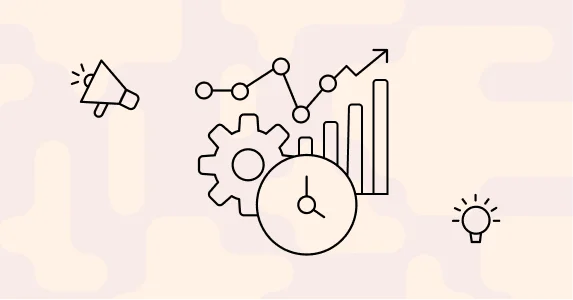Marketing automation is the difference between lost revenue and seizing every chance to capture every dollar through strategic marketing.
We all know it’s table stakes to have automation in your marketing strategies today, yet over 20% of brands are still stagnant, relying on manual tasks, and expect multifold revenue results.
Don’t be one of those brands—this guide will teach you everything you need to know to execute a robust marketing automation strategy and technology stack.
A Day in the Life of a Marketer (Without Marketing Automation)
Skylar isn’t your average marketing drone. She is a senior marketing manager at a major ecommerce company, a seasoned strategist, a data whiz, and a creative force to be reckoned with. Today, her sights are set on conquering the summer sale, and her weapon of choice? A spreadsheet so vast and unruly it could qualify as a historical document. With that, the mission was to create engaging campaigns for their upcoming summer sale.
The first hurdle—segmenting the audience list. Skylar meticulously divided the list of email addresses into different categories based on purchase history, demographics, and past interactions. Needless to say, the list took hours.
Next came the content. Skylar juggled between writing persuasive copy, hunting down images, and wrestling with the company’s clunky platform. Every line of copy felt like deciphering an ancient text and formatting the content and images for various devices and channels threatened to send it over the edge.
By lunchtime, Skylar had a Frankenstein email template in place. It wasn’t perfect or personalized, but it would have to do. But the fight didn’t end there. Scheduling the email for optimal delivery involved a complex dance with time zones and competitor marketing strategies—all calculated and entered manually, of course.
The afternoon was a blur of social media management, setting app notifications, and designing WhatsApp messages. Each channel was a different beast – character count, image formats, and optimizing send times. With the creation and execution ready, the next hurdle was tracking engagement, an equally tedious and time-consuming process with the company’s clunky automation platform.
Moving at this speed, you might finally see results by the time your successor takes over. If this seems like your story, you’re not alone. Most marketers are stuck in this time warp, but fret not – there’s a way out.

Marketing Automation: Your Key to Simple, Effective Marketing
No marketer needs to go through what Skylar does. Marketing automation has matured over the years to be the lynchpin of your overall marketing strategy. To give you perspective, 80% of top-performing companies have incorporated marketing automation platforms and are experiencing revenue growth within 3 years of adopting such solutions.
If Skylar’s pain resonates with you, you will realize the potential uptick marketing automation can bring to your B2C business. It is your marketing sidekick. The tool automates repetitive tasks and makes personalized campaigns more efficient by targeting specific audience segments with automated messages across email, web, social media, WhatsApp, and text.
It streamlines these processes at scale so you can focus on the big-picture marketing strategy & meet your goals.
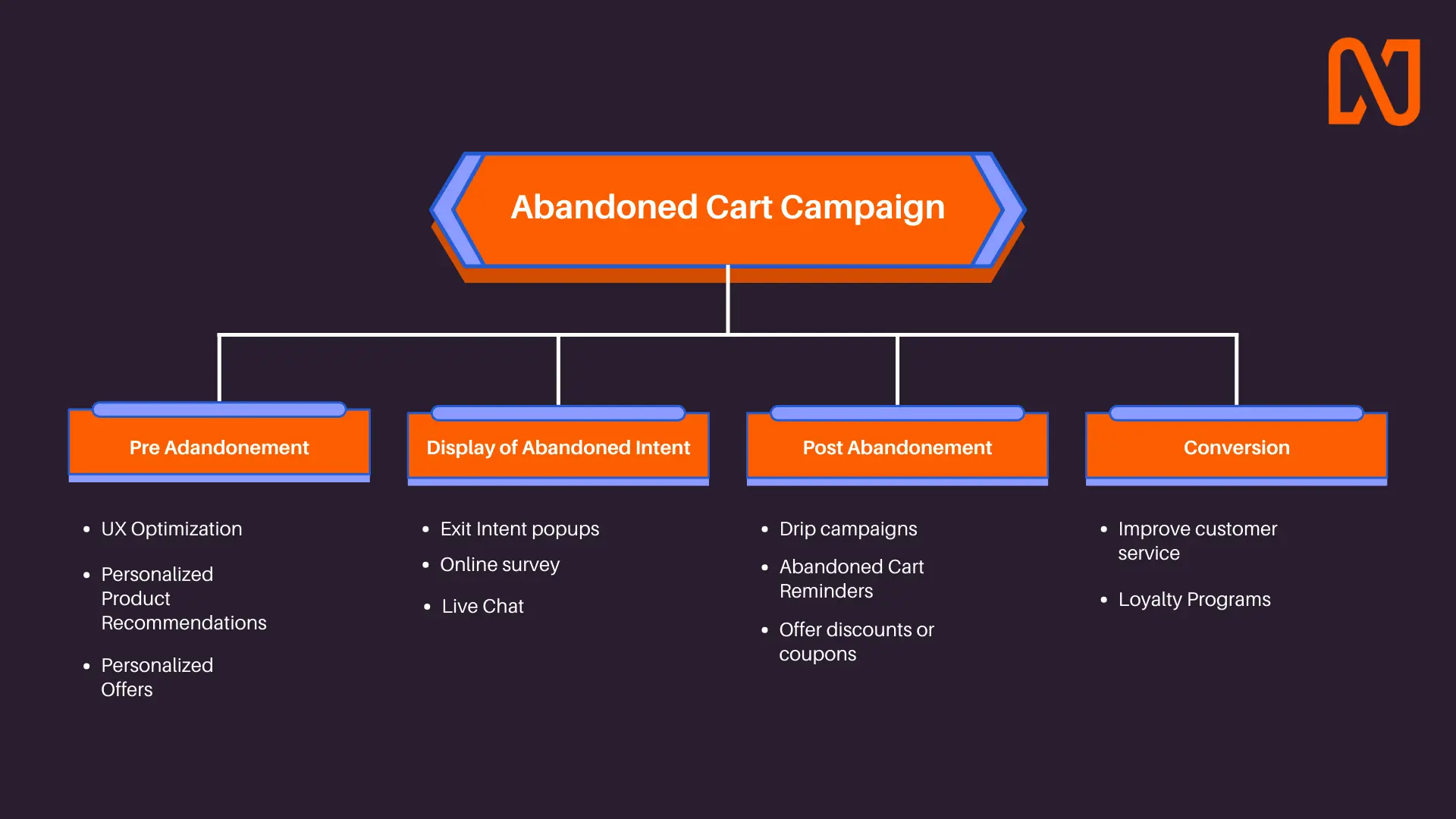
Marketing Automation Flowchart Example for an Abandoned Cart Campaign
The ultimate objective of marketing automation is to generate revenue for your business. It can be through multiple avenues like bringing traffic to your website, prompting customers to make a purchase or collecting first-party data, guiding users to complete transactions and more. Because of the speed and personalisation of marketing interventions, automation platforms have been proven to improve conversion & purchase rates across channels.
Marketing Automation Tools as Magic Wands for Better Revenue
Now that you know that marketing automation can take a lot of responsibility off your shoulders, there’s more than what meets the eye with these nifty tools.
In fact, 61% of marketers anticipate increasing their budgets to accommodate marketing automation tools in the upcoming years, so their significance is only increasing.
Still on the fence? Then, have a look at what these tools can do for your brand.
1. Lead Tracking
Capturing leads is just one piece of a large marketing puzzle. Customers who are interested in your product are not afraid to share their contact details to interact with your brand.
Marketing automation tools can collate large volumes of this information from multiple touchpoints, such as your website, app, social media, emails, etc., and present a holistic view of your customer. Using this information, marketing automation tools can build customer relationships through nurture sequences.
Most leads (80%) are not sales-ready when they first encounter your product. This means you need to set up nurturing sequences at every stage until they’re ready to buy. Marketing automation tools take care of that. It details lead tracking, assigns leads to the correct stakeholders, facilitates their journey down the funnel, and nurtures them continuously to improve customer retention.
These automated workflows can trigger the right messages at the right times, pushing leads closer to a purchase decision without constant human intervention.
2. Categorizing Your Audience
Every customer who discovers your product is at a different stage of the buying lifecycle. If you want to yield maximum results, you need to categorize these customers accordingly. A robust marketing automation platform excels at customer segmentation capabilities. This includes a user-friendly interface for audience building that allows swift segment creation.
Segmentation filters could be based on customer behavior, past purchases, affinities, RFM, demographics, and more. It can also perform real-time analysis of audience segments through an intuitive UI, compare segments instantaneously, and use built-in data for segmentation without extra integrations.
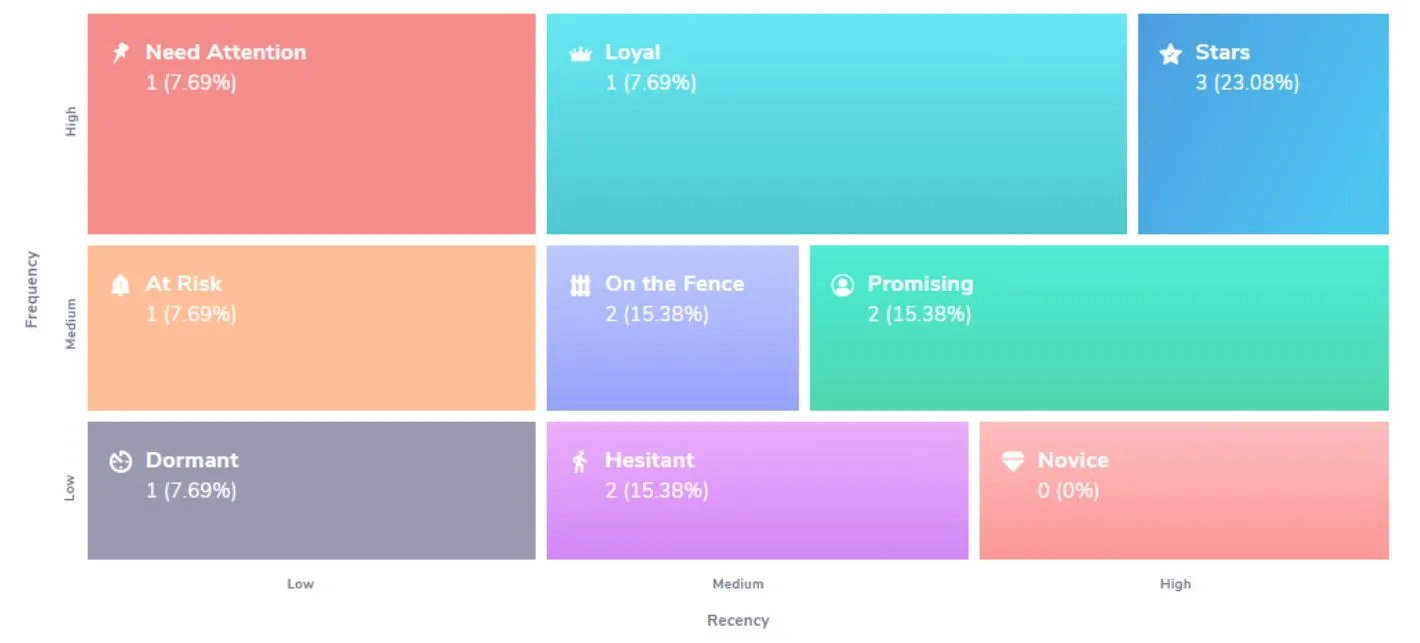
RFM segmentation based on user behavior
The platform can go one step further and offer proactive predictive segments, anticipating your customer’s next best action and allowing post-creation editing of segments based on imported data.
It is critical to ensure that the platform’s segmentation capabilities do not require extensive involvement from other teams or tech engineers for audience building. These features empower you to make data-driven decisions, optimize campaigns, and effectively enhance customer engagement.
3. Email Automation
Email continues to provide the highest return on investment as a customer engagement channel. With its potential to deliver hyper-personalized messages to hyper-segmented audiences, email automation is extremely effective in fostering meaningful connections with your audience.
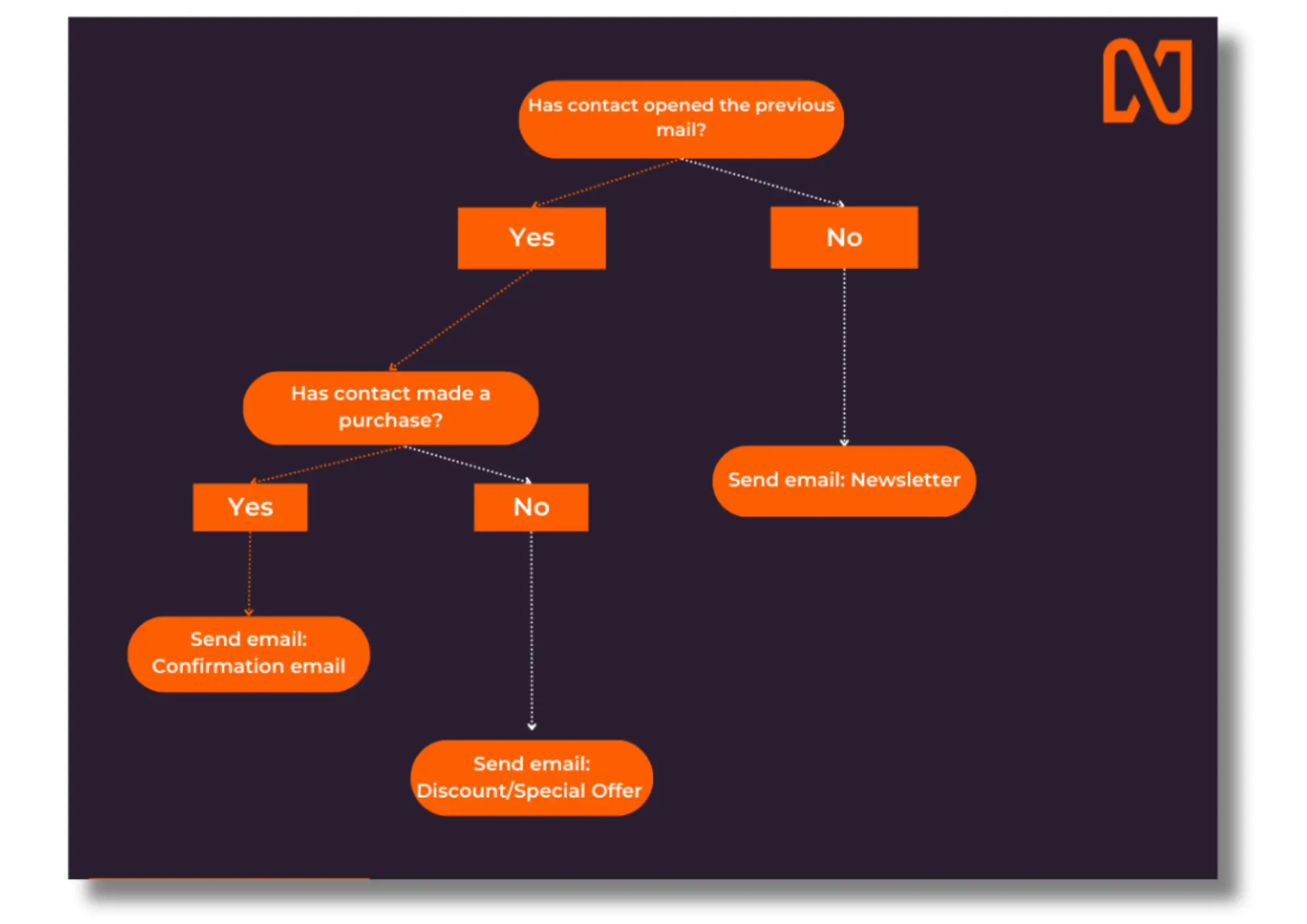
A simple email marketing automation flowchart
You can use email automation to trigger specific actions in the customer journey, such as
- Onboarding emails
- Cart abandonment emails
- Re-engagement campaigns
- Feedback campaigns, and lots more
These automations ensure that customers are continuously engaged with meaningful and tailored content based on your audience segment.
Moreover, email automation opens doors to other important marketing features like A/B testing, subject-line optimization, etc., help refine campaigns based on real-time analytics. This scalability and efficiency allow you to set up complex workflows easily and send large volumes of emails, leading to improved effectiveness, retention, and ROI.
Uncover the impact of email marketing in your industry with data from our report analyzing 100 billion emails. Your all-in-one resource for optimizing campaigns, boosting conversions, and maximizing ROI.
3. Omnichannel Campaigns
Studies show that consistent messaging across channels improves purchase intent by 90%. This underscores the need for omnichannel marketing, all accessible from a single, unified platform.
A marketing automation platform excels in intelligent channel and best-time optimization, considering various AI-driven factors that can be manually adjusted.
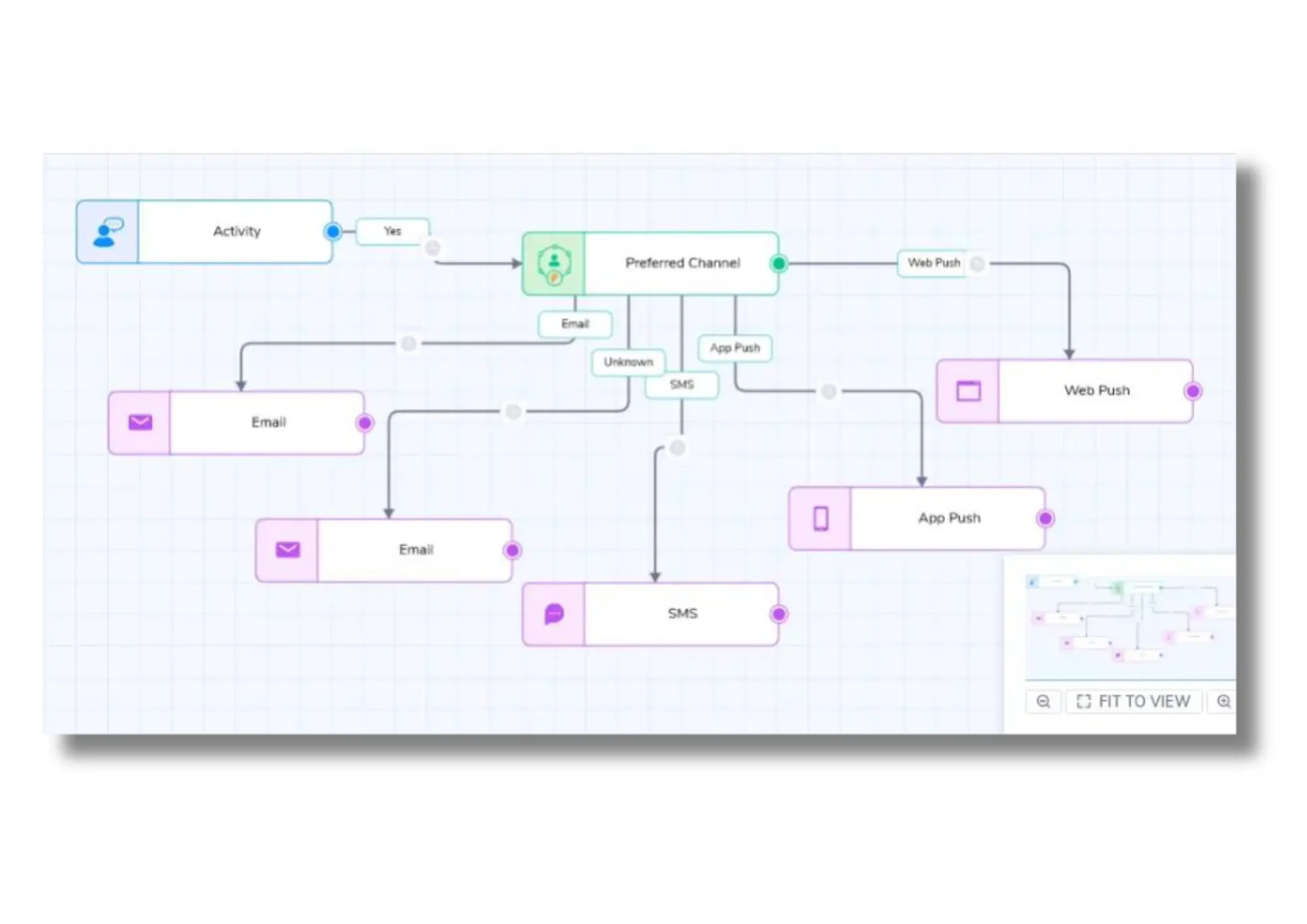
An omnichannel journey triggered after specific activities
Omnichannel marketing is the key to delivering seamless experiences across channels. Why is this important? Because a seamless customer experience lets you reach your customers where they are, with the right context, at the right time.
What makes this possible is that omnichannel marketing recognizes your user’s previous interactions along their journey. It then creates user flows so that with each content interaction (across different channels), the user moves towards a specific goal.
The outcome? Purchase frequency is 250% higher on omnichannel than on a single channel, and the average order value is 13% higher.
So, you’re not just boosting engagement across various channels but also building trust with your users. Instead of overwhelming them with ads and promotional content on multiple platforms, you offer personalized and contextual communication that adds value.
Crocs Cracked the Code: 42X ROI with Omnichannel Marketing! Unlock Their Secrets Here!
4. Making Every Interaction Special
We all know that one-size-fits-all messaging is a surefire way to fail. Blasting messages to your customers without concrete messaging is worse than sending no message at all.
Marketing automation platforms have the capability to leverage customer data from your leads to personalize these messages based on user behavior, preferences, and purchase history. This level of personalization is essential for engaging customers meaningfully, increasing the likelihood of conversions, and fostering loyalty.
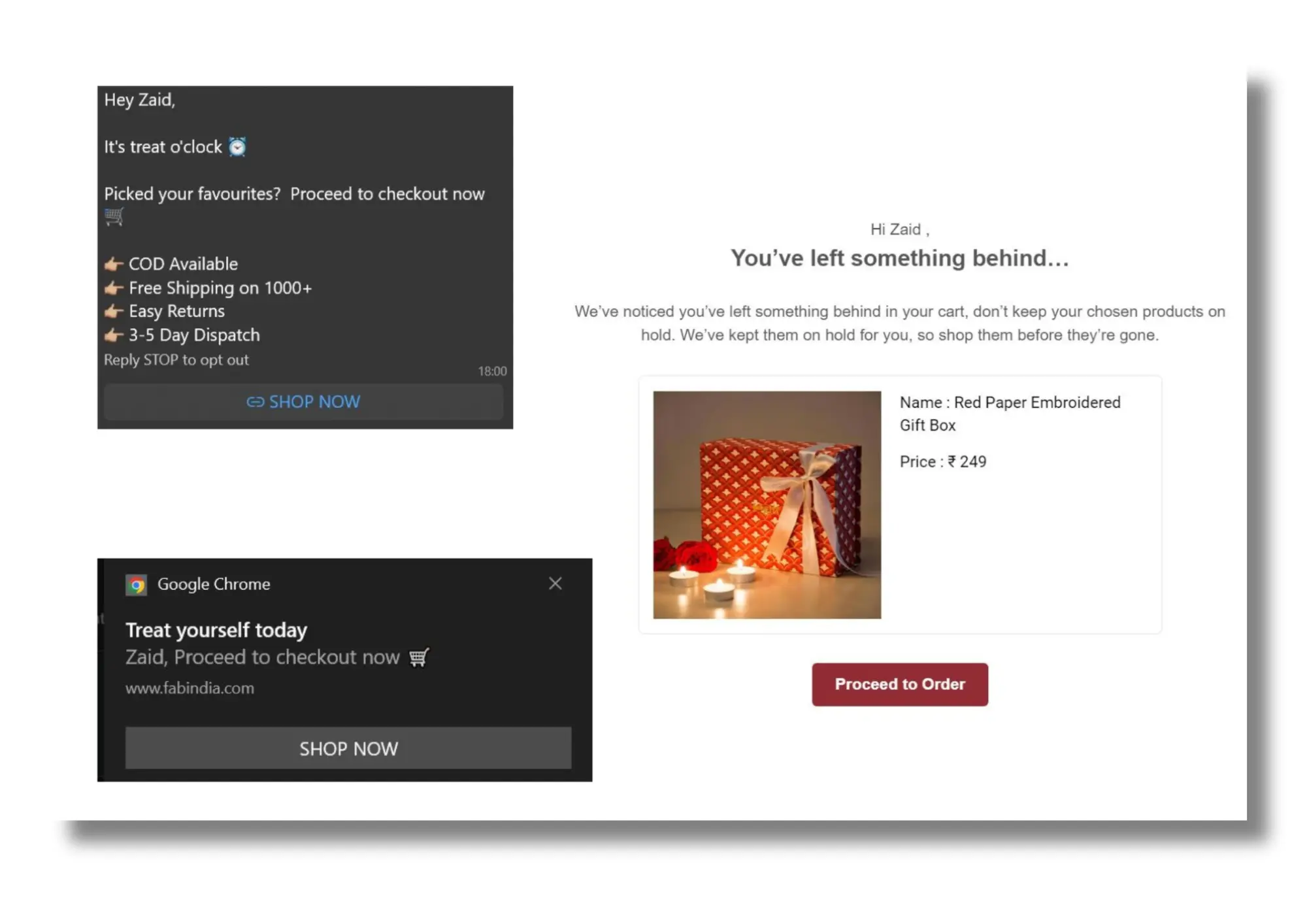
An example of a cart abandonment reminder personalized to web push notification, WhatsApp message, and email
These tools now offer generative AI as an option, accelerating the creation of personalized content across various channels. This personalized content can be used for message composition, including email subject lines, email bodies, push notifications, SMS, and in-app messages.
This goes hand-in-hand with segmentation, as each segment demands different kinds of content to make engagement more meaningful and relevant. This process may sound tedious but a marketing automation platform can segment these audiences and create content with just a few clicks.
5. Analytics & Dashboards
Now that every message is personalized, segmented, meaningful, and sent to customers at different stages of their journey, it becomes critical to measure the effectiveness of these campaigns.
The best marketing automation platform will provide intuitive dashboards that make it easy to comprehend the performance of your campaigns. These metrics analyze data and tell you how your campaigns are performing—in other words, how your customers interact with your brands. You can get reports provide comprehensive insights into channel performance, customer journeys, customer behavior and more.
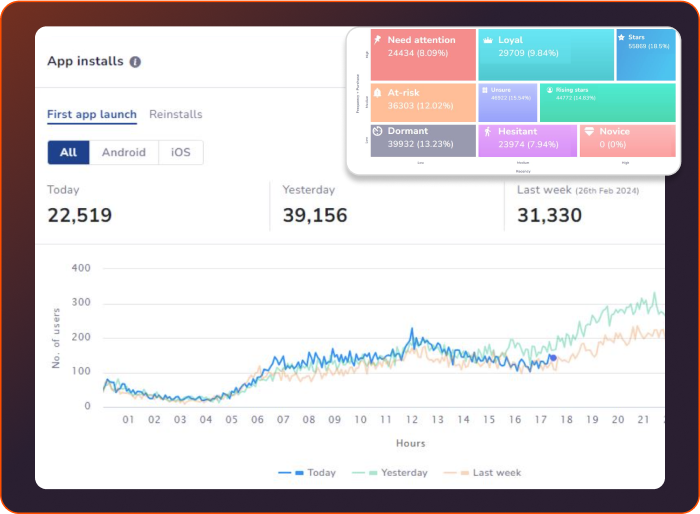
6. Increased Conversions and ROI
The end goal of these tools is to boost your company’s revenue. They address the gaps in the buying journey by deploying personalized messages that encourage customers to complete actions that they may have abandoned.
Addressing these gaps with marketing automation tools has helped over 75% of marketing teams turn leads into conversions. Ensuring customers complete these transactions boosts your brand’s conversions and revenue, and these tools are attributable to your ROI.
How to Select the Best Marketing Automation Tool: Key Considerations
We can all now agree that marketing automation offers countless benefits. But how do you choose a marketing automation tool amongst the overwhelming number of tools available?
Fear not, we’ve compiled all the crucial aspects to guide you in selecting the best solution for your organization.
1. Audience Segmentation
When evaluating a marketing automation platform, check if it has a user-friendly interface for building audience segments. Make sure the platform allows you to build segments by importing customer data without requiring specialized code, and verify if it can also export data, including anonymous data.
Ensure the platform lets you instantly compare segments and use built-in data points without additional integrations. It should also update segments in real-time based on behavioral changes during customer sessions and allow for detailed interaction-based segmentation.
The platform should also allow for creating segments combining online and offline data for use across all channels without major limitations. It should include proactive predictive analytics segments, allow editing of segments after creation, and support real-time suppression lists for frequency capping. Finally, the platform should be easy to use without requiring extensive help from engineers.
2. Personalizing Experiences
Recall that one-size-fits-all messaging is dead. For every campaign, it is important to cover all channels like desktop and mobile websites, apps, push notifications, email, and display. This means setting up targets, creating content, defining test/optimization parameters, and delivering the campaign effectively.
The platform should clearly show what it can and can’t do for each channel, with screenshots to explain the campaign setup process and how the final result will look. It should personalize campaigns across multiple channels to give customers a smooth and consistent experience.
The platform should support using APIs to create personalized campaigns, with detailed documentation on available endpoints and methods. It should also have a smart product recommendation engine. Additionally, it should allow saving content templates with personalized fields, including any limitations for channels or personalization.
3. Designing Omnichannel Campaigns and Journeys
Today, your customers are active across all communication channels, and as a brand, you need to be there too. A good marketing automation platform should let you handle different communication channels from one place, making it easy to manage data and analytics. It should also use AI to help create seamless customer journeys by using smart filters and triggers to send out campaigns.
The platform needs to support all types of automated messages, like OTPs, password resets, order confirmations, and shipping updates. A drag-and-drop tool should be available to make setting up these customer journeys easy, using clear product screenshots.
It should include smart features and best-time optimization, with AI-driven adjustments that can be tweaked manually. It should offer AI tools for writing messages and allow previews for emails, push notifications, SMS, and in-app messages across various devices and platforms.
Lastly, the platform should have ready-to-use customer journey templates and let you save custom journeys for later. It should provide real-time performance metrics, error alerts, and options to edit and track campaigns after they go live.
4. Analytics and Reporting
Make sure the platform gives a complete view of each customer with detailed profiles and screenshots for clarity. It should track data for anonymous customers across different touchpoints and support collecting zero-party data in various ways.
The platform should handle different types of first-party data, manage cookie consent, and integrate user identities across browsers, devices, and channels. It should also use strong identification methods for lead qualification, support multiple IDs, and merge previously tracked anonymous data once a customer is identified. It should track interactions across multiple sub-brands without creating different IDs for each.
The platform should import user data attributes, support batch imports, and offer near-real-time API data availability. It should export granular event-level data, customer segment data, and customer profile data.
It is crucial to manage customer opt-in and opt-out status for triggered emails and update profiles in real-time. The system should provide detailed reporting metrics, real-time dashboard updates, full-funnel reports, and multiple attribution models.
5. Implementation and Integrations
Setting up the platform’s SDK and going live is usually quick, allowing you to create campaigns shortly thereafter. Any possible delays or challenges should be clearly mentioned.
The platform should track individual campaign performance within your tech stack using a standard integration approach. It should also connect to third-party systems to bring in customer and behavioral data like user preferences, transaction data, and historical user actions.
Built-in connections to data warehouses are essential, with details on the integrations and how they work. Integration with email testing and rendering tools is also necessary, along with a list of compatible third-party tools, native partnerships, and tools that connect without native integration. The platform should also integrate with CPaaS players (if any), with any limitations clearly described.
The key steps for implementing the system on websites and mobile apps should be detailed, with links provided. The platform should list all ESPs it integrates with, and its API capabilities should be fully documented and self-serve, allowing you to manage all API keys from the UI without needing the support team.
Additionally, the platform should enable real-time export of event and performance data to other reporting or visualization tools and databases.
6. Compliance
The platform must meet security certifications like SOC 2, ISO 27001, and HIPAA, with clear documentation. It should comply with international regulations like GDPR and CCPA and support Single Sign-On (SSO) methods such as SAML, WS-Fed, and OAuth2.
Data centers should be globally located, with clear local data storage policies. User permissions must be managed through role-based access, with comprehensive data encryption and protection policies. The platform should allow PII masking on dashboards and data exports and provide access to security audit logs.
The platform should detail supported personal, financial, and sensitive data using a data classification matrix. Encryption methods, including anonymization, should be clearly explained. Role provisioning and de-provisioning rules must be established, specifying staff access to sensitive data. Secure procedures for destroying hard copy data and deleting archived data are essential.
The platform should enforce MFA for access, use SSO for internal applications, and ensure vendor compliance with security standards. Regular audits should be conducted, with transparent data-sharing practices and an accessible Privacy Policy. Evaluate solutions based on functionality, integration options, user interface, customer support, and user reviews. Request demos and free trials to see the software in action.
What Are the Top Marketing Automation Tools in the Market?
1. Netcore Marketing Automation
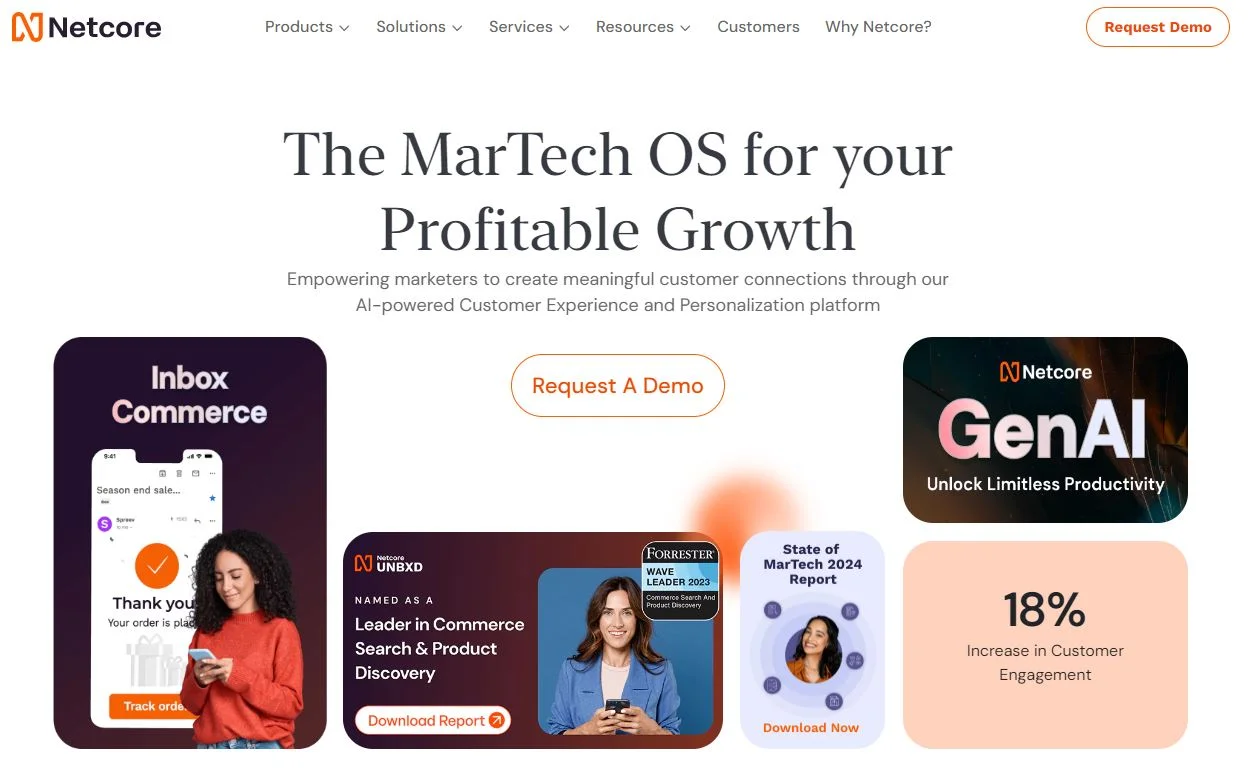
Netcore’s marketing automation tool stands out as a versatile platform designed to empower B2C brands across various industries with its robust email marketing, customer engagement, and personalized messaging capabilities.
The platform excels in its ability to seamlessly integrate with existing technology stacks, making it a preferred choice for companies looking to enhance their digital marketing efforts without overhauling their entire systems. Netcore’s strength lies in owning each communication channel, offering better delivery rates with zero third-party interventions.
Its deep analytics and machine learning algorithms provide actionable insights, enabling you to craft highly targeted campaigns that resonate with your audience.
Netcore’s marketing automation platform is renowned for its real-time capabilities. It allows marketers to react instantly to customer behaviors and trends, ensuring that communications are always relevant and timely. This agility helps in significantly boosting customer engagement rates and, ultimately, conversion rates.
The platform supports a wide range of automation functions, from simple autoresponders to complex behavioral triggers and journey mapping. This flexibility ensures that businesses of all sizes can tailor their marketing efforts to meet specific goals and customer expectations.
2. HubSpot Marketing Automation
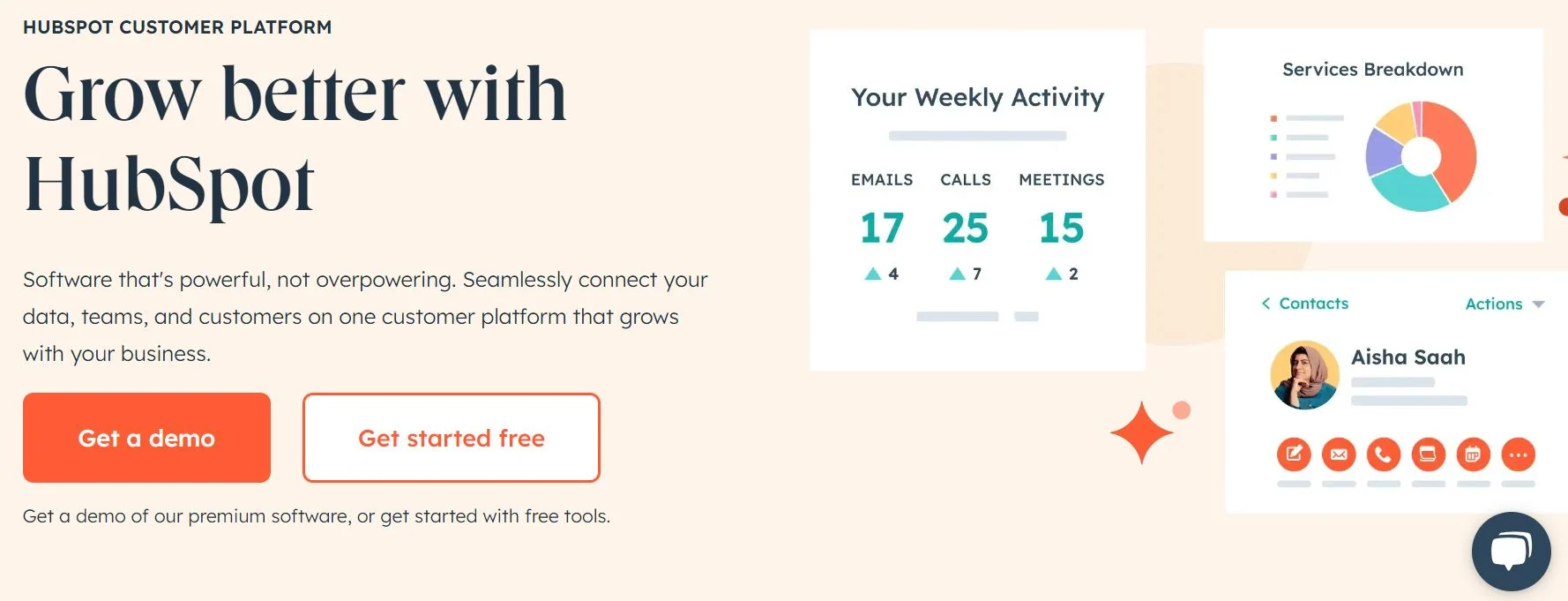
HubSpot marketing automation tool is known for its comprehensive and user-friendly interface that seamlessly integrates with the broader HubSpot CRM ecosystem. This tool is designed to cater to businesses looking to automate their inbound marketing efforts, including email campaigns, social media scheduling, and content marketing workflows.
HubSpot’s strength is its ability to create highly personalized customer journeys based on detailed contact insights and interactions. The platform offers robust analytics tools that help marketers measure performance across channels, enabling them to optimize strategies and improve ROI effectively.
It also features a vast array of customizable templates for emails, landing pages, and full marketing campaigns, making it easy for users to create professional-looking materials without extensive technical knowledge. Its highly intuitive workflow engine allows users to set triggers based on numerous conditions, such as user behavior, data changes, or time intervals, ensuring timely and relevant engagement with leads and customers.
3. Klaviyo
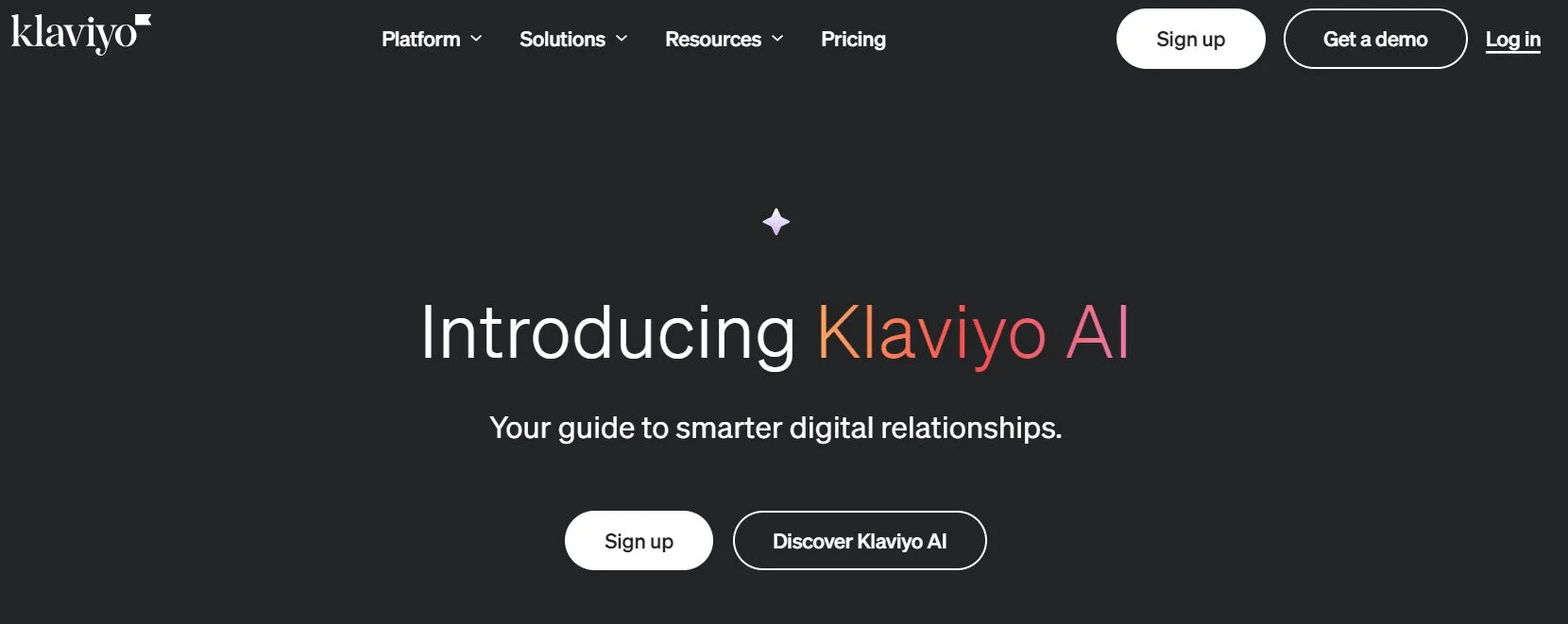
Klaviyo enhances your marketing efforts by leveraging every piece of customer data you possess. This marketing automation tool is engineered to support growth, seamlessly managing everything from emails and SMS to online advertising, with a particular focus on ecommerce marketing automation. Klaviyo does more than just send emails; it analyzes customer behaviors, tracking their browsing habits, purchases, and even abandoned carts.
Additional standout features of Klaviyo include tailored product recommendations and strategies for re-engaging customers after purchases. It also offers excellent integration with Shopify, facilitating a more cohesive ecommerce strategy.
With Klaviyo, you can centralize all your customer data, simplifying the process of sending targeted, personalized messages across various channels.
4. ActiveCampaign
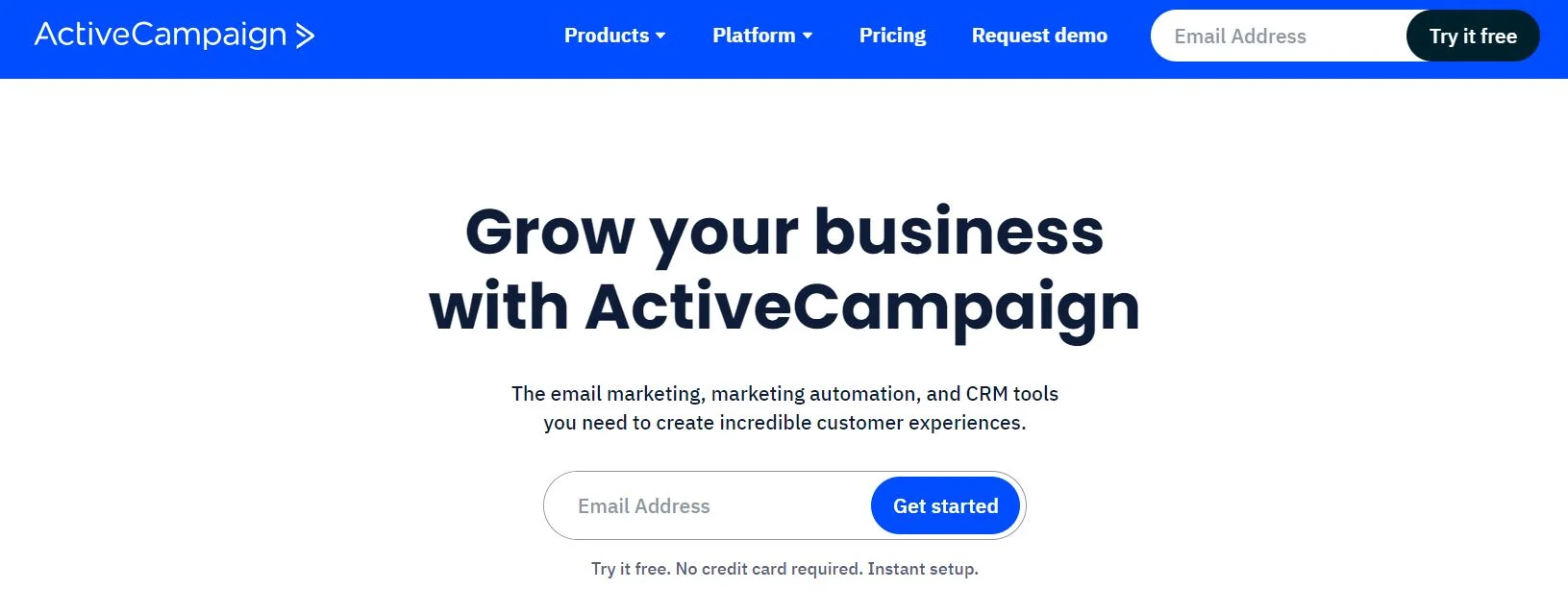
ActiveCampaign distinguishes itself in the marketing automation landscape through its emphasis on customer experience automation. Combining email marketing, CRM, and machine learning technologies, ActiveCampaign helps businesses go beyond basic automation to create optimized customer experiences across all their touchpoints.
This platform is particularly adept at understanding customer paths, predicting behaviors, and triggering actions based on those predictions. This allows for highly personalized marketing strategies that can adjust in real-time to customer interactions.
ActiveCampaign is also highly accessible to small businesses due to its competitive pricing and intuitive interface. Its site tracking and event tracking capabilities enable users to see how contacts interact with their website or applications, which can trigger automation tailored to those interactions.
How to Implement Marketing Automation
A successful, effective marketing automation implementation requires well-defined steps that go beyond the usual technology rollouts. We have highlighted the points to consider below when you’re implementing campaigns using automation.
1. Set Clear Goals and Objectives
Defining your goals and objectives is the first and most crucial step in implementing marketing automation. Determine why you need marketing automation. Are your employees spending too much time on mundane tasks? Are you looking to streamline lead nurturing or improve customer retention?
Clear objectives will guide your strategy and help measure success. For instance, if you are a B2C retailer brand aiming to boost sales, you can implement various strategies and define how each will contribute to increased revenue:
- Increase online sales: Set a target, such as a 15% increase within the first year.
- Reduce shopping cart abandonment: Aim to decrease cart abandonment rates by 15% within the first quarter.
- Improve customer retention: Strive to increase customer retention rates by 10% over a year through loyalty programs, exclusive offers, access to new launches, and more.
Setting clear, measurable goals also helps you find the right marketing automation tool for your business.
2. Create Personalized Customer Journeys
Marketing automation allows you to create personalized customer journeyscustomize every interaction based on data.
Here’s what you can do:
- Send Dynamic Emails: Go beyond just using the customer’s first name. Build emails based on their past purchases and interests, and extend this personalized outreach to their preferred social media channels.
- Create Smart Trigger Options: Create messages that need to be delivered on the desired channels when customers complete certain actions or milestones during the buying journey.
- Distribute Push Notifications: Integrate mobile messages with email campaigns via SMS, RCS, and web push notifications. Keeping these communications highly personalized results in a very high open rate.
3. Run a Pilot Program
Before full-scale implementation, run a pilot program to test the system. This helps identify potential issues, refine processes, and assess alignment with your goals. The pilot program will help:
- Identify potential issues such as unforeseen challenges or misalignments.
- Evaluate user experience by gathering feedback from team members.
- Test workflow effectiveness and document benefits.
How to Run a Pilot Program:
- Form a team responsible for the pilot program.
- Select a smaller, targeted audience for manageable testing.
- Monitor performance, use analytics, and gather feedback.
- Iterate and optimize based on findings.
Running a pilot program will give you invaluable insights into the real-world performance of your marketing automation system, and can make data-driven improvements before full implementation.
4. Keep an Iterative Approach after Implementation
Marketing automation is an ongoing journey of improvement. An iterative approach involves continuous evaluation, refinement, and expansion of your efforts. This approach allows agility and adaptation to new trends and technologies, as well as fine-tuning messaging and strategies based on customer behavior and feedback.
To implement this approach effectively:
- Monitor Progress: Continuously analyze data to track campaign performance.
- Feedback Loops: Encourage team feedback to understand system effectiveness.
- Regular Updates: Stay updated with new platform features and capabilities.
- Adjust Based on Goals: Regularly revisit and adjust your goals and objectives.
An iterative approach ensures your marketing automation system evolves with changing market conditions and emerging opportunities, driving better results.
Examples of Brands Leveraging Marketing Automation
So far, we’ve spoken all about the features, benefits, and stats to make a case for why you need to have marketing automation. Here are 3 real-life examples to seal the deal.
Life Pharmacy Achieves 78% Growth in Online Revenue Using Marketing Automation
| The Challenge | The Solution |
|---|---|
| Life Pharmacy aimed to establish automation processes to reduce manual engagement with users, which posed several challenges: – They sought an easy-to-implement solution that didn’t demand extensive technical skills or ongoing manual oversight. – Enhancing campaign effectiveness required refining targeting and retargeting strategies. – Adopting an omnichannel marketing approach was crucial to enhancing customer engagement and optimizing campaign outcomes. | Netcore Cloud collaborated with them to achieve their goals using AI-driven customer engagement and automation: Automation: They implemented web and email automation, including welcome sequences and messages to re-engage inactive users. Journeys: Automated workflows captured customer interest across various stages, triggering relevant communication channels to prompt action. Contextual web push notifications: These targeted web visitors, reaching them even when they weren’t actively browsing the site. |
The Result: Life Pharmacy’s Online Business Booms as Revenue Surges 78%!
| The Challenge | The Solution |
|---|---|
| Key challenges included: – Enhance Customer Journeys: Identify and resolve user drop-off points by automating touchpoints for a seamless experience. – Embrace Omnichannel Engagement: Communicate across various channels to improve outreach, refining targeting, and retargeting strategies. – Simplify Implementation: Deploy a user-friendly solution that doesn’t demand extensive technical expertise. – Enhance Key Metrics: Increase open rates, click rates, and overall engagement to drive improved marketing results and revenue growth. | Netcore Cloud’s Approach: – Data-Driven Success: Shriram Finance leveraged Netcore’s analytics to optimize communications, achieving better outcomes. – Smart Segmentation Excellence: Using Netcore’s Smart Segmentation, Shriram Finance targeted specific user segments for highly effective campaign results. – Clear Investment Messaging: Simplifying Fixed Deposit messaging by highlighting benefits: higher returns, low investment, flexible withdrawal, and varied tenure choices. – Evolution of Strategic Communication: Netcore and Shriram collaborated on automated journeys at critical fixed deposit stages, implementing a multi-channel strategy for consistent and impactful communication. – AI-Powered Precision: Harnessing Netcore’s Raman AI Engine with STO & SLG, Shriram delivered tailored communications based on customers’ preferred engagement times. |
CakeRush Achieves 80% Revenue Growth with Netcore’s Customer Engagement & AMP Email Automation
| The Challenge | The Solution |
|---|---|
| The brand aimed to boost customer engagement, conversions, and revenue. They sought an automated retargeting system to reconnect with existing customers for upselling opportunities. Key challenges included: – The absence of an omnichannel marketing tool – Inability to personalize communication or segment audiences effectively – Lack of automation capabilities to capture abandoned add-to-cart and product-view scenarios – Inadequate reporting and analytics functionalities | CakeRush opted for Netcore Cloud to automate their marketing campaigns and harness AI capabilities for personalized recommendations across their website and email channels. – Automated journeys ensured a smooth customer experience by triggering web push notifications and emails when users visited specific website pages or completed predefined actions, guiding them toward conversion at every step of their journey. – Real-time A/B Testing was crucial in identifying the most effective variant for Web Push Notifications. – Web messages were strategically deployed for exit intent scenarios and to engage new subscribers. |
The Result: Sweet success for CakeRush with revenue growth jumping 80% using Netcore’s marketing automation platform!
Shriram Finance achieves an impressive 81X ROI using Netcore’s Full Stack Marketing Automation Platform
| The Challenge | The Solution |
|---|---|
| Key challenges included: – Enhance Customer Journeys: Identify and resolve user drop-off points by automating touchpoints for a seamless experience. – Embrace Omnichannel Engagement: Communicate across various channels to improve outreach, refining targeting, and retargeting strategies. – Simplify Implementation: Deploy a user-friendly solution that doesn’t demand extensive technical expertise. – Enhance Key Metrics: Increase open rates, click rates, and overall engagement to drive improved marketing results and revenue growth. | Netcore Cloud’s Approach: – Data-Driven Success: Shriram Finance leveraged Netcore’s analytics to optimize communications, achieving better outcomes. – Smart Segmentation Excellence: Using Netcore’s Smart Segmentation, Shriram Finance targeted specific user segments for highly effective campaign results. – Clear Investment Messaging: Simplifying Fixed Deposit messaging by highlighting benefits: higher returns, low investment, flexible withdrawal, and varied tenure choices. – Evolution of Strategic Communication: Netcore and Shriram collaborated on automated journeys at critical fixed deposit stages, implementing a multi-channel strategy for consistent and impactful communication. – AI-Powered Precision: Harnessing Netcore’s Raman AI Engine with STO & SLG, Shriram delivered tailored communications based on customers’ preferred engagement times. |
The Result: Shriram Finance crushed it with an 81X ROI thanks to Netcore’s marketing automation!
Conclusion
Embracing marketing automation is no longer optional—it’s essential. By streamlining repetitive tasks and enabling personalized, data-driven campaigns, achieving attributable revenue growth becomes the norm.
When you pick a marketing automation tool, evaluate your options carefully, considering features like audience segmentation, omnichannel capabilities, and analytics. These tools will help you target the right audience with the right message at the right time, driving higher engagement and conversion rates.
As you integrate marketing automation into your business, remember that the best approach combines great technology with strategic planning. With the right tools and practices, marketing automation can transform your business operations and lead to significant growth.






